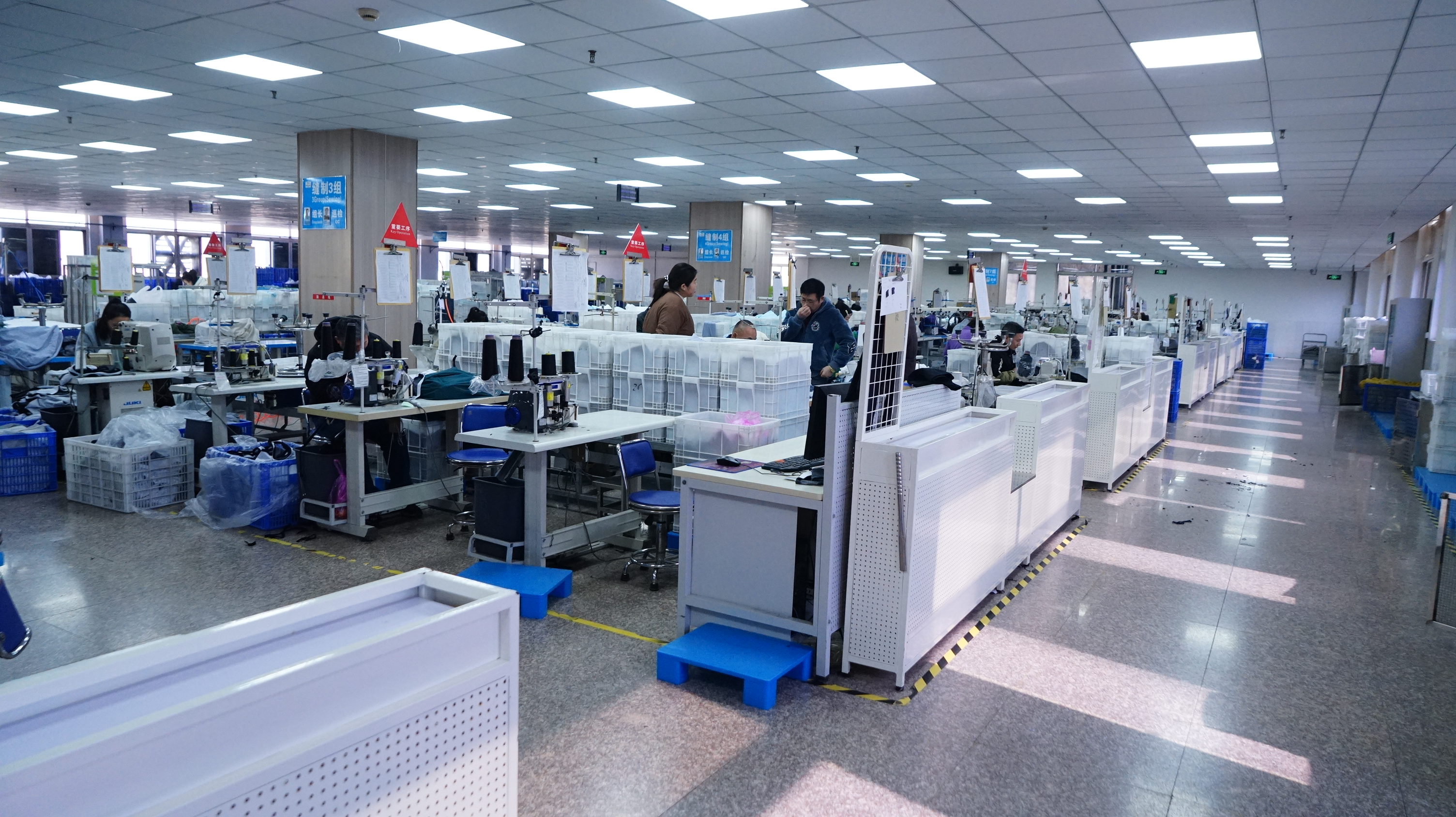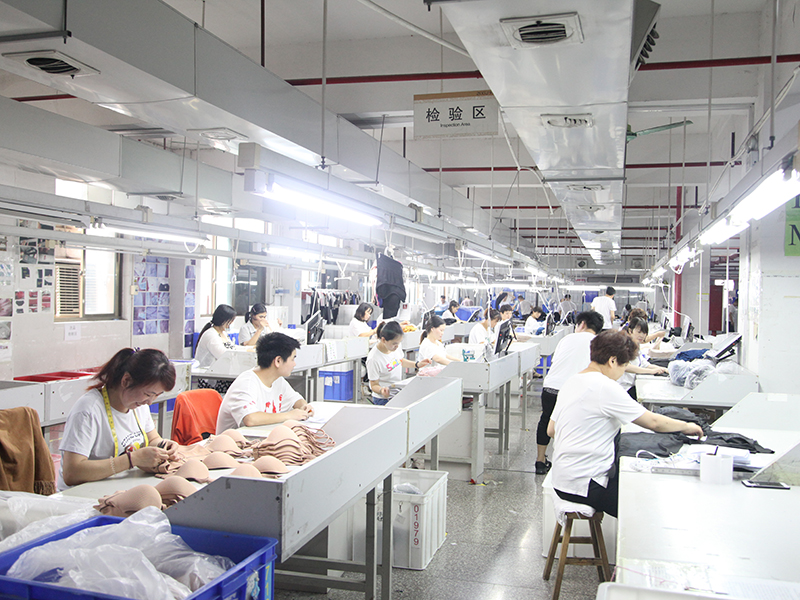The escalation of the US-China trade war in 2025, particularly with the United States imposing tariffs as high as 125% on Chinese goods, is poised to significantly disrupt the global apparel industry. As one of the world’s largest apparel manufacturers, China faces immense challenges.
However, Chinese manufacturers, who have long been central to global apparel production, are likely to take proactive measures to mitigate the effects of these tariffs. These actions could include offering more competitive pricing and favorable terms to other countries, ensuring that their goods remain attractive in a global market increasingly burdened by tariffs.
1. Rising Production Costs and Price Increases
One of the immediate effects of the US tariffs is the increase in production costs for Chinese manufacturers. Many global apparel brands, especially in the mid- to low-end market, have long relied on China's cost-effective manufacturing capabilities. With the imposition of higher tariffs, these brands face increased production costs, which will likely lead to higher retail prices. As a result, consumers, particularly in price-sensitive markets like the US, may find themselves paying more for their favorite clothing items.
While some high-end brands may be able to absorb the cost increase due to their premium positioning, lower-priced brands may struggle. However, this shift in pricing dynamics creates an opportunity for other countries with cost-efficient production capabilities, such as India, Bangladesh, and Vietnam, to capture a larger share of the global market. These countries, with their lower production costs, are positioned to take advantage of the supply chain disruptions and tariffs faced by Chinese manufacturers.

2. Chinese Manufacturers Offering More Favorable Terms to Other Countries

In response to these tariffs, Chinese apparel manufacturers are likely to become more accommodating to other international markets. To offset the impact of the US tariffs, China’s manufacturing sector may offer additional discounts, lower minimum order quantities (MOQs), and more flexible payment terms to countries outside of the US. This could be a strategic move to maintain market share in regions like Europe, Asia, and Africa, where demand for affordable apparel remains high.
For example, Chinese manufacturers might offer more competitive prices to European and Southeast Asian markets, helping to keep their products attractive even with the higher production costs. They may also improve logistics services, provide more favorable trade agreements, and increase the value-added services they offer to overseas clients. These efforts will help China retain its competitive edge in the global apparel market, even as the US market contracts due to higher tariffs.
3. Supply Chain Diversification and Strengthening Global Partnerships
With the new tariffs, many global apparel brands will be forced to reassess their supply chains. China’s role as a central node in the global apparel supply chain means that disruptions here will have a cascading effect across the industry. As brands seek to diversify their manufacturing sources to avoid excessive reliance on Chinese factories, this could lead to increased production in countries like Vietnam, Bangladesh, and Mexico.
However, building new production hubs takes time. In the short term, this could lead to supply chain bottlenecks, delays, and higher logistics costs. To mitigate these risks, Chinese manufacturers may strengthen their partnerships with these countries, forming strategic alliances that allow for shared technology, joint production efforts, and more cost-effective solutions for the global apparel industry. This collaborative approach can help China maintain its global market share, while simultaneously fostering stronger ties with emerging markets.

4. Increased Consumer Prices and Shifting Demand

Higher production costs, resulting from increased tariffs, will inevitably lead to price increases for apparel. For consumers in the US and other developed markets, this means that they will likely have to pay more for clothing, potentially reducing overall demand. Price-sensitive consumers may shift to more affordable alternatives, which could hurt brands that rely on Chinese manufacturing for their low-priced goods.
However, as Chinese manufacturers raise their prices, countries like Vietnam, India, and Bangladesh could step in to offer lower-priced alternatives, allowing them to capture market share from Chinese-made products. This shift could lead to a more diversified apparel production landscape, where brands and retailers have more options for sourcing cost-effective apparel, and the balance of power in global apparel production may slowly shift towards these emerging markets.
5. Chinese Manufacturers’ Long-Term Strategy: Increased Cooperation with Emerging Markets
Looking beyond the immediate trade war effects, Chinese manufacturers are likely to increasingly turn their attention to emerging markets, such as those in Africa, Southeast Asia, and Latin America. These markets have rising consumer demand for affordable apparel and are home to low-cost labor forces, making them ideal alternatives to China for certain types of apparel production.
Through initiatives like the "Belt and Road" initiative, China has already been working to strengthen trade relationships with these countries. In response to the tariff crisis, China may accelerate efforts to offer favorable terms to these regions, including better trade agreements, joint manufacturing ventures, and more competitive pricing. This could help Chinese manufacturers mitigate the impact of lost orders from the US market while expanding their influence in fast-growing markets.

Conclusion: Turning Challenges into New Opportunities
The escalation of the 2025 US-China trade war undoubtedly brings significant challenges to the global apparel industry. For Chinese manufacturers, the increased tariffs may lead to higher production costs and disruptions in the supply chain, but these hurdles also present opportunities to innovate and diversify. By offering more favorable terms to non-US markets, strengthening partnerships with emerging countries, and optimizing production processes, China’s apparel manufacturers can maintain a competitive edge in the global market.
In this challenging environment, ZIYANG, as an experienced and innovative apparel manufacturer, is well-positioned to help brands navigate these turbulent times. With its flexible OEM and ODM solutions, sustainable production practices, and commitment to high-quality manufacturing, ZIYANG can assist global brands in adapting to the new realities of the global apparel market, helping them find new opportunities and thrive in the face of trade challenges.

Post time: Apr-10-2025


